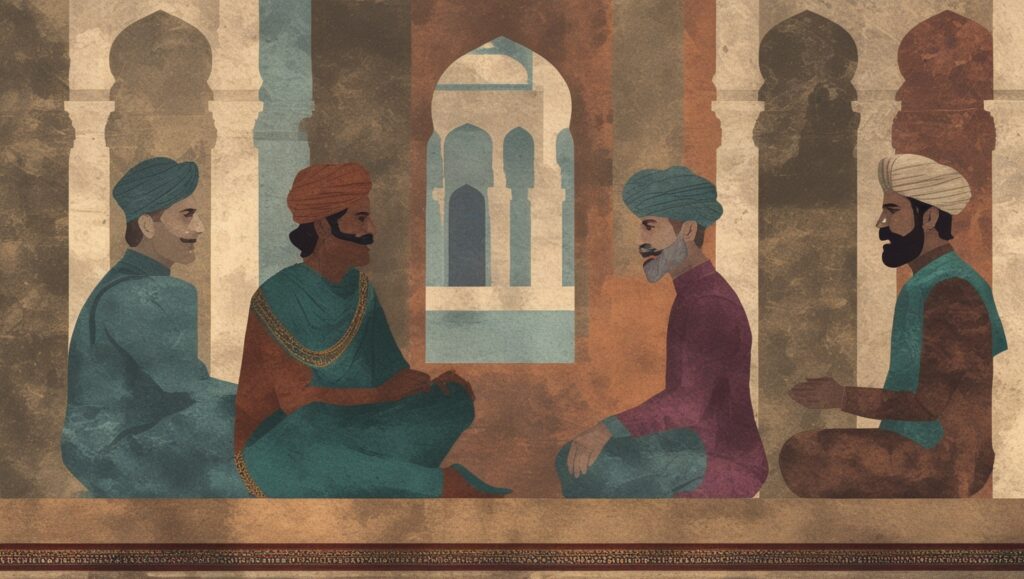The Conflict Between India and Pakistan, two neighboring countries in South Asia, has been ongoing for more than seven decades. It is one of the most significant and complicated disputes in the world, with deep historical, political, religious, and territorial roots. Despite various attempts to resolve the issues, the conflict remains unresolved, and tensions between the two nations are still high in 2025.
The Origins of the Conflict
The roots of the Conflict Between India and Pakistan can be traced back to the partition of British India in 1947. The British Empire, which had ruled over India for nearly two centuries, decided to grant independence to its colonies in the subcontinent. However, instead of granting independence to a single unified country, the British divided India into two separate nations: India and Pakistan. This division was based on religious lines, with India being a secular state with a Hindu majority and Pakistan being created as a homeland for Muslims.
The partition was marked by violence, bloodshed, and one of the largest migrations in history. Approximately 15 million people were displaced, and it is estimated that over one million people lost their lives in communal violence between Hindus, Muslims, and Sikhs. This traumatic event left deep scars on both countries, setting the stage for future conflicts.
One of the main issues that arose from the partition was the question of the princely state of Jammu and Kashmir. The state, which had a Muslim majority, was ruled by a Hindu king, Maharaja Hari Singh. Pakistan wanted Kashmir to join Pakistan because of its Muslim population, while India wanted to retain control over the region. In 1947, the Maharaja chose to accede to India, which led to the first war between the two countries.
The Kashmir Issue: The Core of the Conflict
The Kashmir issue remains the central point of contention between India and Pakistan. The state of Jammu and Kashmir was initially divided into two parts, with India controlling around 60% and Pakistan controlling the remaining 30%. The territory of Gilgit-Baltistan, in the north, is under Pakistan’s control, while Jammu and Kashmir, including the disputed Kashmir Valley, is controlled by India.
Over the years, both India and Pakistan have fought multiple wars and skirmishes over Kashmir, and the situation has become more complex. India insists that Kashmir is an integral part of its territory, while Pakistan maintains that the people of Kashmir should be allowed to determine their own future. The region has witnessed numerous protests, insurgencies, and human rights violations, further escalating the conflict.
In 2019, the Indian government, led by Prime Minister Narendra Modi, took a controversial step by revoking the special status of Jammu and Kashmir through Article 370 of the Indian Constitution. This move angered Pakistan, which condemned it as an illegal act and called for international intervention. Pakistan also downgraded diplomatic ties with India and sought support from the global community. This development further worsened relations between the two countries and led to heightened military tensions along the Line of Control (LoC), the de facto border separating the Indian- and Pakistan-controlled parts of Kashmir.
Nuclear Threat: A Dangerous Dimension
One of the most alarming aspects of the Conflict Between India and Pakistan is the presence of nuclear weapons in both countries. Both India and Pakistan conducted successful nuclear tests in 1974 and 1998, respectively, making them nuclear-armed nations. The possession of nuclear weapons has added a dangerous dimension to the conflict, as the possibility of a nuclear war between the two countries remains a major concern for regional and global security.
India’s nuclear weapons are part of its “No First Use” policy, which means that it would not use nuclear weapons unless attacked by another country with them. On the other hand, Pakistan has not adopted a similar policy and has made it clear that it would use nuclear weapons if its survival was threatened. The prospect of a nuclear Conflict Between India and Pakistan has led to widespread international concern, with many calling for disarmament and diplomatic solutions to the dispute.
In 2025, both countries continue to modernize their nuclear arsenals, and the nuclear rivalry remains a key factor in the ongoing tension between India and Pakistan.

Major Conflicts and Escalations
While the Conflict Between India and Pakistan has been simmering for decades, there have been several significant escalations over the years that have brought the two countries to the brink of full-scale war. These conflicts have been fueled by terrorist attacks, border skirmishes, and the growing militarization of the region.
1. 2001 Indian Parliament Attack
In 2001, a terrorist attack on the Indian Parliament in New Delhi was blamed on Pakistan-based militants. India accused Pakistan of supporting terrorism and responded by amassing troops along the border. The situation became extremely tense, and both countries came close to war. Although war was avoided, the attack deepened mistrust between India and Pakistan.
2. 2008 Mumbai Attacks
The 2008 Mumbai attacks were another major escalation. In November 2008, a group of militants from Pakistan carried out coordinated attacks across Mumbai, killing over 170 people. India blamed Pakistan-based militant group Lashkar-e-Taiba for the attack, further souring relations between the two countries. Despite numerous talks, the perpetrators of the attack have not been fully brought to justice, and the issue remains a sore point in India-Pakistan relations.
3. 2016 Uri Attack and Surgical Strikes
In 2016, militants attacked an Indian army base in Uri, Kashmir, killing 19 Indian soldiers. India responded by launching “surgical strikes” against militant camps in Pakistan-administered Kashmir. This was the first time in decades that India crossed the Line of Control to conduct military operations. The incident further escalated tensions, with both sides exchanging fire along the LoC.
4. 2019 Pulwama Attack and Balakot Airstrike
In February 2019, a suicide bombing in Pulwama, Kashmir, killed 40 Indian soldiers. The attack was claimed by the Pakistan-based Jaish-e-Mohammad militant group. In response, India launched an airstrike on Balakot in Pakistan, targeting militant camps. This led to a brief but intense military confrontation, with both countries engaging in aerial combat. The situation was defused after diplomatic efforts, but the incident highlighted the fragile security situation in the region.
The Situation in 2025
As of 2025, theConflict Between India and Pakistan remains unresolved. Both countries continue to face domestic challenges, including political instability, economic difficulties, and social tensions. In India, the rise of Hindu nationalism under Prime Minister Narendra Modi’s leadership has further complicated relations with Pakistan. Meanwhile, Pakistan has struggled with internal political and economic crises, including corruption, extremism, and terrorism.
The Kashmir issue remains as contentious as ever, with ongoing protests, violence, and human rights abuses in the region. While there have been periodic ceasefires and peace talks, no lasting resolution to the Kashmir dispute has been achieved.
In recent years, both countries have engaged in limited diplomatic efforts to reduce tensions, but the situation remains volatile. The threat of a full-scale war or even a nuclear Conflict Between India and Pakistan continues to hang over the region. International efforts to mediate the conflict have been largely ineffective, and the world watches with growing concern as the two nuclear-armed nations remain at odds.
Conclusion
The Conflict Between India and Pakistan 2025 remains one of the most dangerous and unresolved disputes in the world. Despite numerous wars, ceasefires, and peace talks, the fundamental issues of territorial disputes, particularly over Kashmir, and the threat of nuclear war continue to dominate the relationship between the two countries. The international community hopes for a peaceful resolution, but the path to peace seems uncertain, and the risks of further violence remain high. The people of both nations continue to suffer from the consequences of this ongoing conflict, and the need for dialogue and diplomacy has never been greater.


